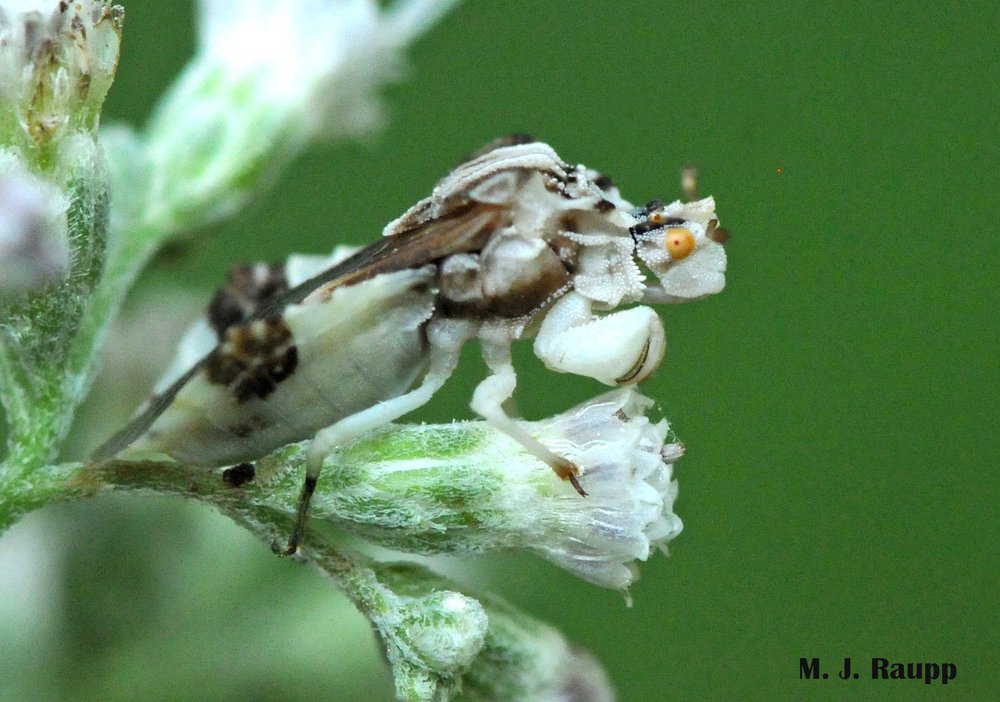
Powerful raptorial forelegs enable ambush bugs to snare prey several times larger than themselves. Mottled shades of white and brown allow the hunter to blend with the blossom on which it hides.
Sundrenched waning days of summer are often the times when many meadow flowers put on their finest show. Nectar laden blossoms are magnets to dozens of pollinators including bees, wasps, flies, and beetles. Little do they know that lurking among the inflorescences are deadly masters of disguise. As the name implies, ambush bugs do not make their living by actively chasing and pouncing on prey like six-spotted green tiger beetles or fierce jumping spiders. While speed and power serve some predators well, they are not the only wiles employed by six-legged hunters. Sometimes stealth and deception work just as effectively when it comes to catching dinner. Just ask the praying mantis. Ambush bugs employ an irregular body outline and beautiful patchwork of white and brown or yellow and brown that enables them to blend with colorful blossoms and the light and dark patterns of a flower head.
To find an ambush bug, look for a bee behaving strangely un-bee-like. Hanging motionless upside down beneath a blossom is pretty un-bee-like. A closer examination of the goldenrod flower above the honeybee revealed a rough ambush bug that dropped its prey when disturbed by a giant hand. In another meadow, stealth, camouflage, and an inescapable death-grip enabled an ambush bug to capture a bumble bee several times larger than itself. Strange and beautiful are these crafty hunters.

A perfidious kiss of the ambush bug paralyzes a paper wasp and seals its fate. Liquified tissues of the wasp will be drawn into the digestive tract of the ambush bug through its beak.
These sly killers sit and wait motionless for hours until an unsuspecting victim lands nearby to collect pollen or sip nectar. With a flick of its greatly enlarged raptorial front legs, the ambush bug snares prey that are often several times larger than itself. Ambush bugs are so adept at capturing honeybees that some beekeepers consider them a pest. With the victim in its grasp, the ambush bug inserts its beak into the prey and injects paralytic saliva. Digestive enzymes break down the tissues of the immobilized victim and its liquefied remains are sucked through the beak into the gullet of the ambush bug. Yum! If you want to observe these masters of disguise, find a patch of goldenrod or boneset and look for bumble bees or honey bees dangling motionless beneath flower heads. Carefully examine the unfortunate bee and see if it has been snared by one of these camouflaged assassins.
Acknowledgements
We thank Gordon for discovering the ambush bug that served as an inspiration for this story. An Introduction to the Study of Insects by Borer, De Long, and Triplehorn was used as a reference for this Bug of the Week. To learn more about ambush bugs please visit the following website: http://www.uky.edu/Ag/CritterFiles/casefile/insects/bugs/assassin/assassin.htm#ambush
No comments:
Post a Comment